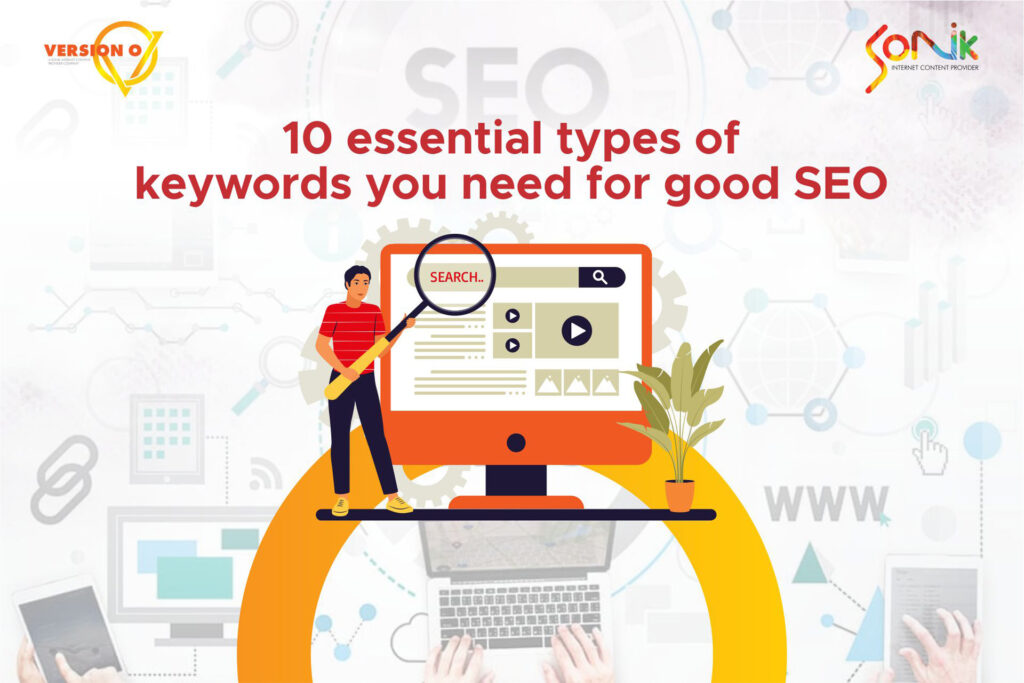In today’s world, websites are an essential aspect of any online business – and good website design is crucial. After all, your website is the first point of contact between your business and your customers.
They’re also a great way to boost your company’s online presence – and there are numerous types of websites you can choose from, based on your business and industry.
What is common to all of them is that the way your site is designed can either attract customers or push them away. That’s why it’s extremely important to pay attention to website design.
Here are our 10 top tips after years of being in the business and helping numerous clients stand out with effectively designed websites that continue to generate traffic to this day.
Ensure your website is visually appealing
Looks matter, at least in the online web design world. Visuals play a crucial role in capturing the attention of customers and communicating the key message of your business. In fact, 75% of people make up their mind about a website based on its design alone – and it takes them only 50 milliseconds to make up their mind!1
If they don’t like what they see, you will lose them in under a second. A well-designed website, therefore, should always be visually attractive. Here are a few ways to achieve this:
- Use high-quality images: Professional-looking, good-quality images, icons and graphics help showcase your products or services more effectively. Taking care of these shows your customers you have a good attention to detail and care about your site.
- Using eye-catching colours: Choosing the right shades and hues can play a significant role in website design. Colours evoke emotions and convey messages, so always choose hues that are in line with your brand and appealing to the target audience.
- Use white space effectively: No one likes a cluttered-looking, messy website. Ensure there is enough clean, white space separating the key areas of your site from each other. This also make sure that key information, like CTAs, are not missed.
Your website should be easy to navigate
Customers appreciate simplicity and ease of use. A complicated website can be irritating and push customers away. Research shows that nearly 90% of customers won’t return to a website after just a single bad experience.2
So, to attract customers and ensure they keep coming back to your site, it is essential to keep the website simple and easy to navigate. Some ways to achieve this include:
- Keep the layout simple: The layout of the website should be easy to understand. The navigation menu should be visible and easy to use.
- Use clear and concise language: The language used on the website should be clear and concise, easy to understand and free of jargon. It should also direct users to perform a clear action or take a decision. The smoother you make this journey, the more effective your site will be in retaining customers.
- Avoid clutter: This is the golden rule. Every section of your website should be directed towards one clear, functional goal. Don’t clutter up your site with lots of unnecessary information or features, because this can make the website appear busy and overwhelming.
Provide a Clear Call-to-Action
A call-to-action (CTA) is a crucial element of any website. It tells the customer what action to take next. Too many websites completely forget about this part – to their detriment.
Calls to action should always be concise and simple: Sign up now, order here, download our ebook, etc. Just using them well is a great way to boost your website traffic.
Here are some rules for good CTAs:
- Clear, direct language: The language used should be clear and concise. It should tell the customer exactly what action to take.
- Use contrasting colours: Most CTAs take the form of buttons. This button should stand out from the rest of the website and immediately capture the user’s attention.
- Don’t have too many CTAs on one page: As we said above, every section should perform a single function, with a single objective. So never crowd one page with too many CTAs.
Ensure your website is mobile responsive
As of 2022, mobile devices accounted for nearly 60% of all global website traffic.3 Similarly, more than 70% of customers said they expect a company’s mobile website to be as good as, if not better, than on a computer or laptop.2
This means that your website must be easily and quickly accessed and navigated on a mobile device. Follow these tips to hit this goal:
- Ensure your design is responsive: Your website – whether it’s a blog, company site, or ecommerce shop – should be designed with mobile devices in mind. This means using a responsive design that adjusts to the screen size of the device. (Read our guide to understand the difference between responsive and adaptive websites, and how to choose one over the other.)
- Test on multiple devices: It is essential to test your website on multiple devices to ensure that it is mobile responsive for all kinds of phones and tablets, as well as different mobile browsers.
- Simplify the design: For some sites, the mobile version should be a simpler, stripped-down version of the main site that loads fast and only contains key, essential items. This ensures that customers can access the information they need quickly and easily, without taking ages to load.
Make sure your site loads fast
Customers expect websites to load quickly. In 2018, the average website load speed on mobile was about 15 seconds, according to Google.4 By 2019, that had dropped to 4 seconds – with every second causing conversion rates to drop by nearly 5%!5
Like we mentioned before, customers take as little as 50 milliseconds to make up their mind. Slow loading times can just make them leave the site and go elsewhere.
Use the below tips to ensure fast loading time:
- Optimise images and videos to reduce file size: Having heavy images and videos on your site can make it very slow to load. Thankfully, there are many ways you can use to optimise graphics so they aren’t so heavy. If you’re using a platform like WordPress, there are also numerous plugins that will help you achieve this.
- Use a content delivery network (CDN): CDNs can help to reduce bandwidth costs by reducing the amount of data that needs to be transmitted from the origin server to the user, reducing the bandwidth usage and costs. This can significantly improve website performance by reducing loading times, improving website availability and scalability.
- Use caching to store frequently accessed data: When a website page is requested by a user, the server has to execute a series of complex processes to generate the page content. This can be resource-intensive, especially for complex or high-traffic websites. Caching frequently accessed data can reduce the server load by minimising the number of times the server has to generate the same content. This will reduce the load on your server and improve your website loading speed.
- Top of Form
- Bottom of Form
Do your SEO right
SEO (Search Engine Optimization) is the process of optimising a website to rank higher in search engine results pages. It makes your site more easily found online, and helps search engines suggest your site as a potential match to several user queries.
We’ve already written about why SEO is required for every business these days. Further, you will need to do both on-page and off-page SEO to optimise your site. In essence, follow the below tips for good website SEO:
- Use relevant keywords: Find out what your audience is searching for, and use those key terms in your website content. You can also capitalise on top keywords by writing blogs about them regularly.
- Use descriptive titles and meta descriptions: The title and description – often called ‘metadata’ – is what informs both the search engines and the users what each page on your website does. So ensure your metadata is clear to both algorithms and humans.
- Use internal linking: Effective usage of internal links is crucial to help search engines understand the structure of your website. It’s also a great way to encourage users to navigate across your whole website. We have a full guide on internal links you can check out for more information.
- Use backlinks properly: Getting good-quality backlinks is a very important part of off-page SEO. This is a way to tell Google and other search engines that your site is trusted by other reputable websites, which is needed to improve your website authority. The more backlinks you have from high-domain-authority websites, the better.
Always keep your website and content up-to-date
Keeping a website updated is crucial to attract and retain customers. An outdated site can make your business look unprofessional and untrustworthy. It also shows customers that you are not bothered about your website.
From plugins and other backend software, to content about offers and even blogs, it’s important you keep updating your website every so often. It will definitely help you improve your search engine ranking and attract more visitors.
- Add fresh content regularly to your website: This can help to keep your site updated and relevant to your customers, and also improve website engagement by providing users with new and interesting information. Fresh content can also improve SEO by providing search engines with new and relevant content to index, improving website visibility in search engine results pages (SERPs).
- Update information whenever there’s a change: Information such as contact details, product information, and pricing must always be accurate and up-to-date. This can improve customer trust by providing users with accurate and reliable information.
- Use modern and up-to-date designs and layouts: Online trends keep changing all the time, so it’s important to always stay abreast. A modern, clean, chic design can make your website more visually appealing and easier to navigate, improving engagement and reducing bounce rates.
- Ensure compatibility with the latest browsers and devices: One key thing to do is to make sure (with adequate and regular testing) that your website is compatible with the latest web browsers and devices. This is what guarantees your site is accessible to all users without website errors, slow loading times, and poor user experience.
Use reviews and testimonials well
Customer reviews and testimonials are a powerful tool to attract customers. Many users depend on online reviews as well as recommendations from friends to choose services or companies.
So, if you play this right, your existing customer reviews and honest testimonials can help you provide social proof and build trust in your services and products.
Here are our top tips for how to do this right:
- Display testimonials prominently: Customer reviews and testimonials should be easily visible to customers. Don’t hide them away in a tiny corner – let them speak bold and clear.
- Usea wide variety of testimonials: Get different kinds of testimonials from different customers – it will show website visitors the diversity of your customer base and increase your credibility and standing in their eyes.
- Respond to reviews: Just as important as displaying your reviews is responding to them, whether positive or negative. This shows that you and your business value customer feedback and are willing to make changes based on it.
And there you have it. By implementing these simple steps, you can create an attractive, engaging, and effective website that helps you convert visitors into customers. Ultimately, this will be one of the most powerful tools in your arsenal to help you build a successful online business.
Liked this article? Make sure to follow our blog for more updates – and follow us on Instagram, LinkedIn and Twitter too for regular tips and tricks!
References
- WPbeginner, 45+ Web Design Industry Statistics and Latest Trends for 2023
- ThinkwithGoogle, Mobile Shopping Ecosystem Page Load Speed





